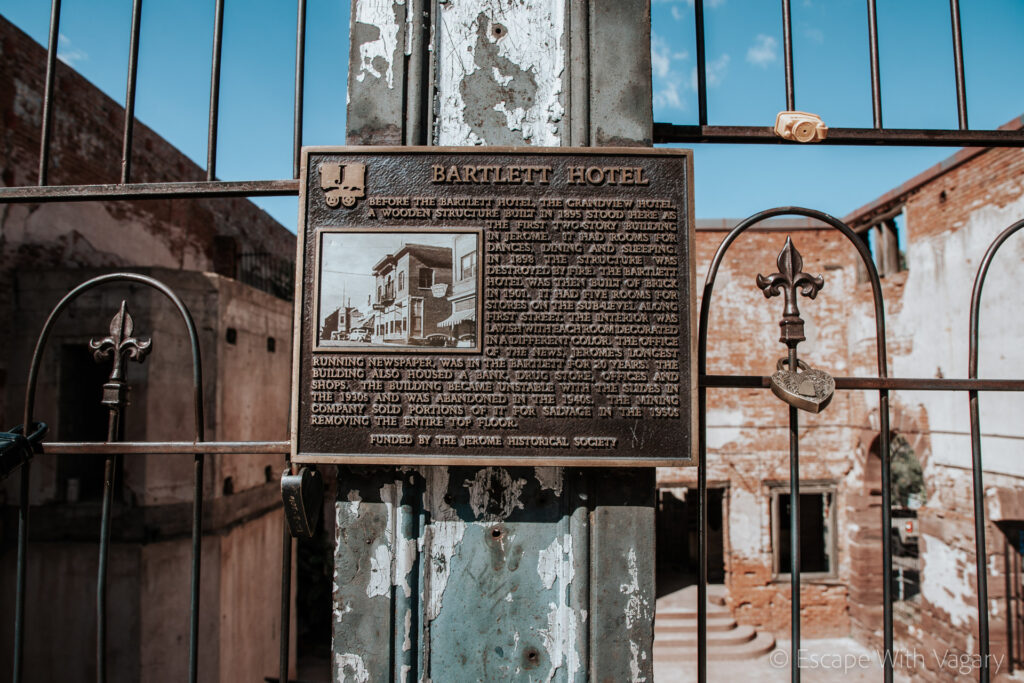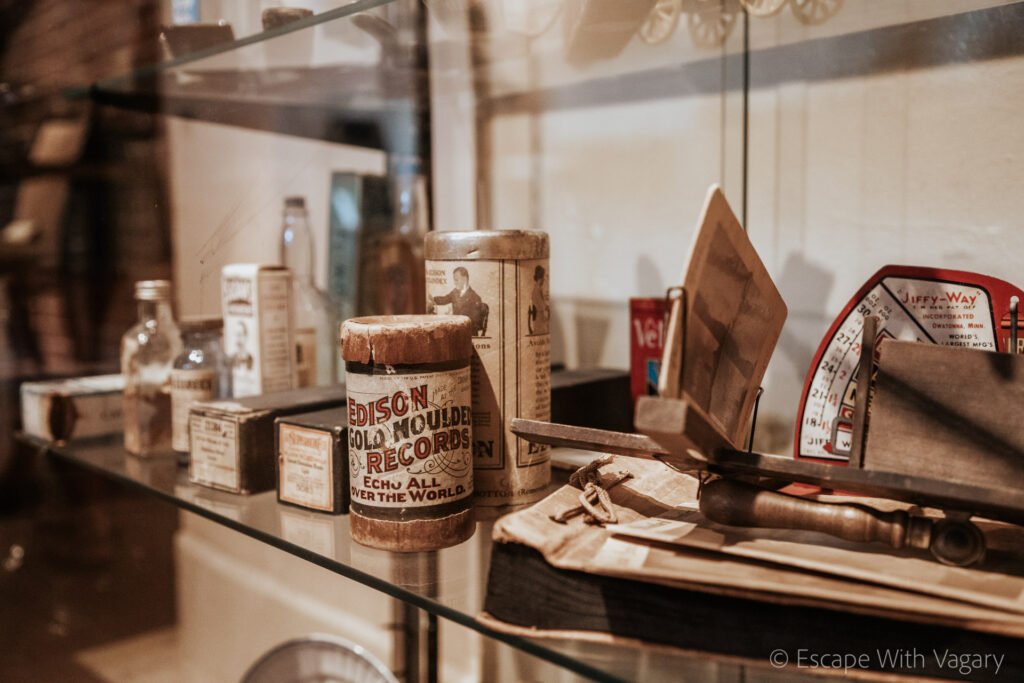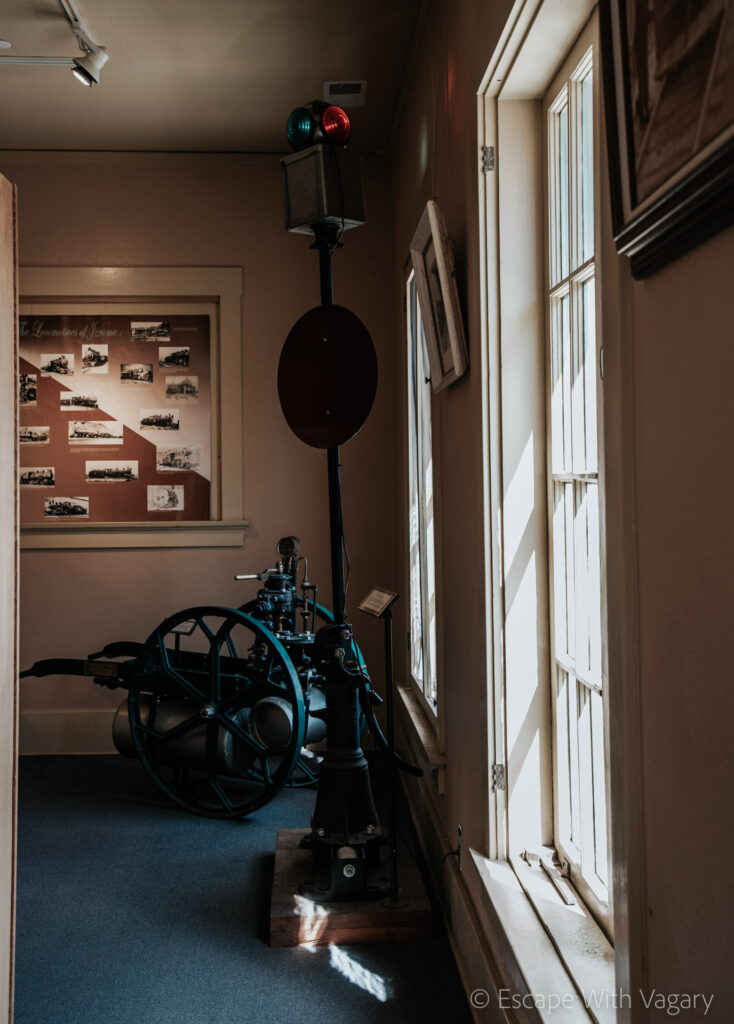


Any town rich in history, and also so well preserved, is bound to have an ample amount of things to do and see. Jerome is a prime example of that. Because of the community’s effort to pay homage to their history, the whole town is sprinkled with old buildings and artifacts dating back to its days of glory. Those days before Jerome was deemed a ghost town.
If you’re planning a visit, or are just interested in learning more, I’ve curated a list of some places to go/learn about. It’s hard to pick one favorite stop since every place holds its own unique story, but my two favorites would be the Jerome Historic State Park and the Ruins of the Bartlett Hotel.
On the drive up to the Jerome State Historic Park, you’ll pass by the tallest, wooden headframe in Arizona. If you have time, stop in and take in the view as you stand above a 1,900 foot shaft; the glass being your only barrier between you and the bottom. The shaft was built in 1918.




The Bartlett Hotel is what replaced the Grandview Hotel after it burned to the ground in 1898. What was once the first two-story building in Jerome, was changed from a wooden to a brick structure. In addition to its rooms, the hotel housed five stores, and was the home of the city’s longest running newspaper’s office.
The landslides that started wreaking havoc in the area during the 1930s, took its toll on the, once popular, Bartlett Hotel. By 1940 owners had given up on reviving the building, and it sat abandoned, its materials salvaged.
Because of the Jerome Historical Society, you can still go and see what’s left of the hotel. What’s left is essentially the shell, two old, cracked toilets, and a portapotty. Over the years, the toilets have become sort of a ‘wishing well,’ for tourists who attempt to make their coins into the bowls. (I didn’t make it in).

Cleopatra Hill was one of the first two mill sites to be discovered in 1875. Once you spot the big white ‘J’ in town, you’ve spotted this famous hill. Filled with tunnels, the town is built around and on top of this hill that back in the day, produced 3 million pounds of copper monthly. The site was named after the Egyptian queen because it was full of ‘riches.’









The creation of a State Park in Jerome had been on the Board’s Ten Year Plan back in 1957, and in October of 1965 the Jerome State Historic Park opened up. The State Representative at the time had pushed for the Douglas home to be the site of the museum and by 1962 the Parks Board had made this happen. A negotiation was done between the board, Lewis and James Douglas (the sons of James S. “Rawhide” Douglas who’d originally built the home). The State Park was underway.







A few rooms on the first floor of the mansion were remodeled for artifact displays in the Douglas Memorial Mining Museum. The 2.43 acres of land features a picnic area, outdoor displays, and an absolutely stunning view of Verde Valley. You can see the whole town from this lookup spot up in the mountains. Guests stopping in get to see old photographs, artifacts, minerals, video presentations, a 3-D model of the town with its underground mines, and more.
Where the Sliding Jail is seen today is over 200 feet from its original location. It quite literally slid down the mountain. This isn’t hard to believe considering how steep and narrow the streets are here, but it’s intriguing looking at this little jail with only a basketball court nearby, its walls caving in every which way.
When the jail was in use, it had been a part of another building until the ground shifted due to underground blasting. So, away it went.
